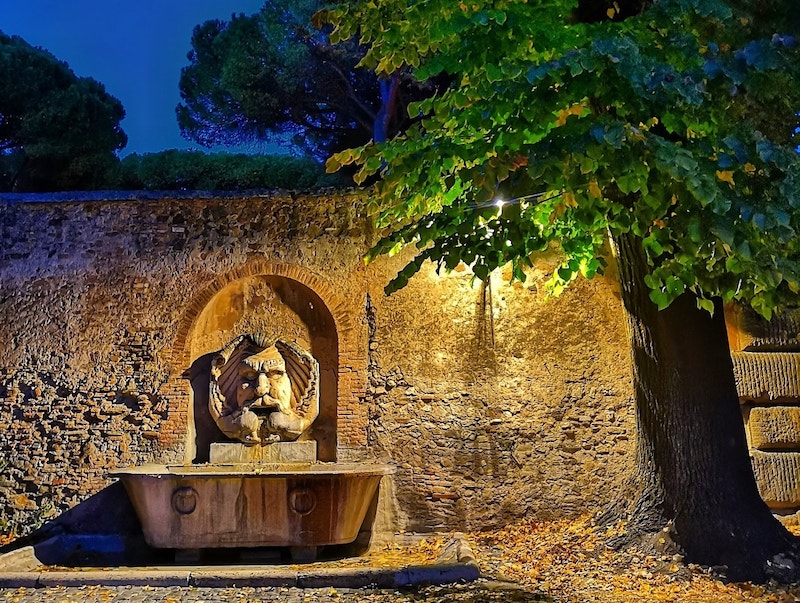Rising steeply above the Circus Maximus to one side and the river Tiber on the other, the Aventine Hill marks the southern boundary of Rome’s historic core. One of the city's fabled seven hills, this leafy residential enclave is often overlooked by visitors to the Eternal City. Their mistake! Climb the hill and you’ll discover fascinating layers of history, beautiful churches, and some of the most spectacular panoramas in all of Rome.
Although it’s most famous for its views, the Aventine is more than just a pretty vantage point. Here you can step inside a 5th-century basilica untouched by time, trace the mysteries of a pagan cult beneath a Christian church, or glimpse St. Peter’s dome through a famous keyhole. It’s a neighborhood that wears its history lightly, while offering some of the most memorable encounters in the city - with saints and emperors, crusaders and monks, myths and miracles. It's one of the highlights of our Hidden Rome itinerary for good reason!
Read on for our guide to what you need to see on the Aventine Hill in Rome.
A Short History of the Aventine Hill
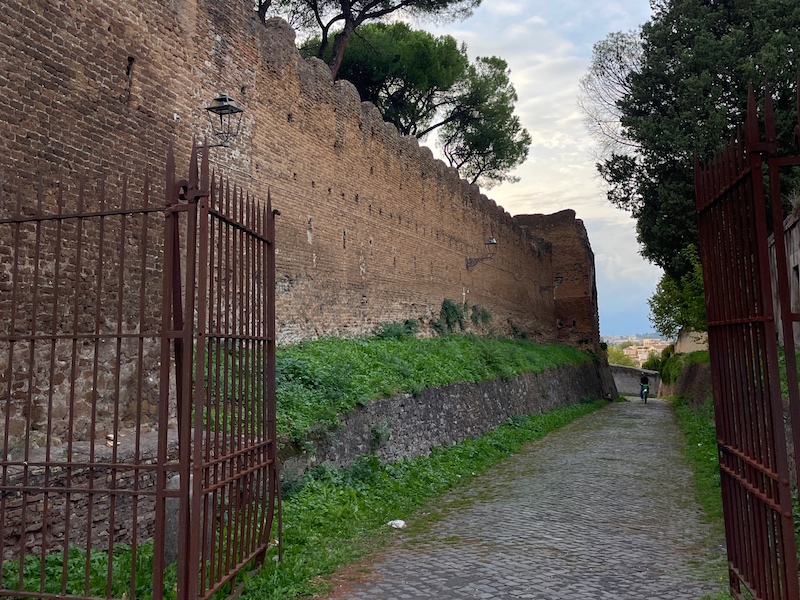
But first some history! Named for the quasi-mythical King Aventinus, king of the pre-Roman city of Alba Longa, the Aventine’s story is bound up with Rome’s very beginnings. Legend recounts how the twins Romulus and Remus chose different hills as vantage points to watch for omens when deciding where to found their city - Romulus on the Palatine and Remus on the Aventine.
When Romulus apparently saw more auspicious birds, he claimed the right to found the city. Remus objected, and the quarrel ended in bloody fratricide. With Romulus victorious and Remus lying dead, Rome was born. From the start, the Aventine was marked as the hill of outsiders: in contrast to the ritzy Palatine, this was the losing hill.
In the Republic, it became home to plebeians, foreign cults, and radical politics. Temples here were dedicated to the Aventine Triad Ceres, Liber, and Libera, gods beloved by commoners. The hill echoed with festivals and even scandal: Livy describes wild nocturnal rites of Bacchus here that were suppressed by the Senate. Later, more peaceful shrines arose, including the great Temple of Diana, which gave the Aventine prestige as a religious center.
By the Middle Ages, the hill’s role had shifted. Fortresses of noble families rose here, including the Savelli stronghold where a pope once relocated his court. Monasteries and churches replaced pagan temples, giving the Aventine its tranquil air. Today, those monastic gardens and basilicas remain, making the hill not just a window onto Rome’s past, but one of the city’s loveliest refuges.
The Knights' Keyhole
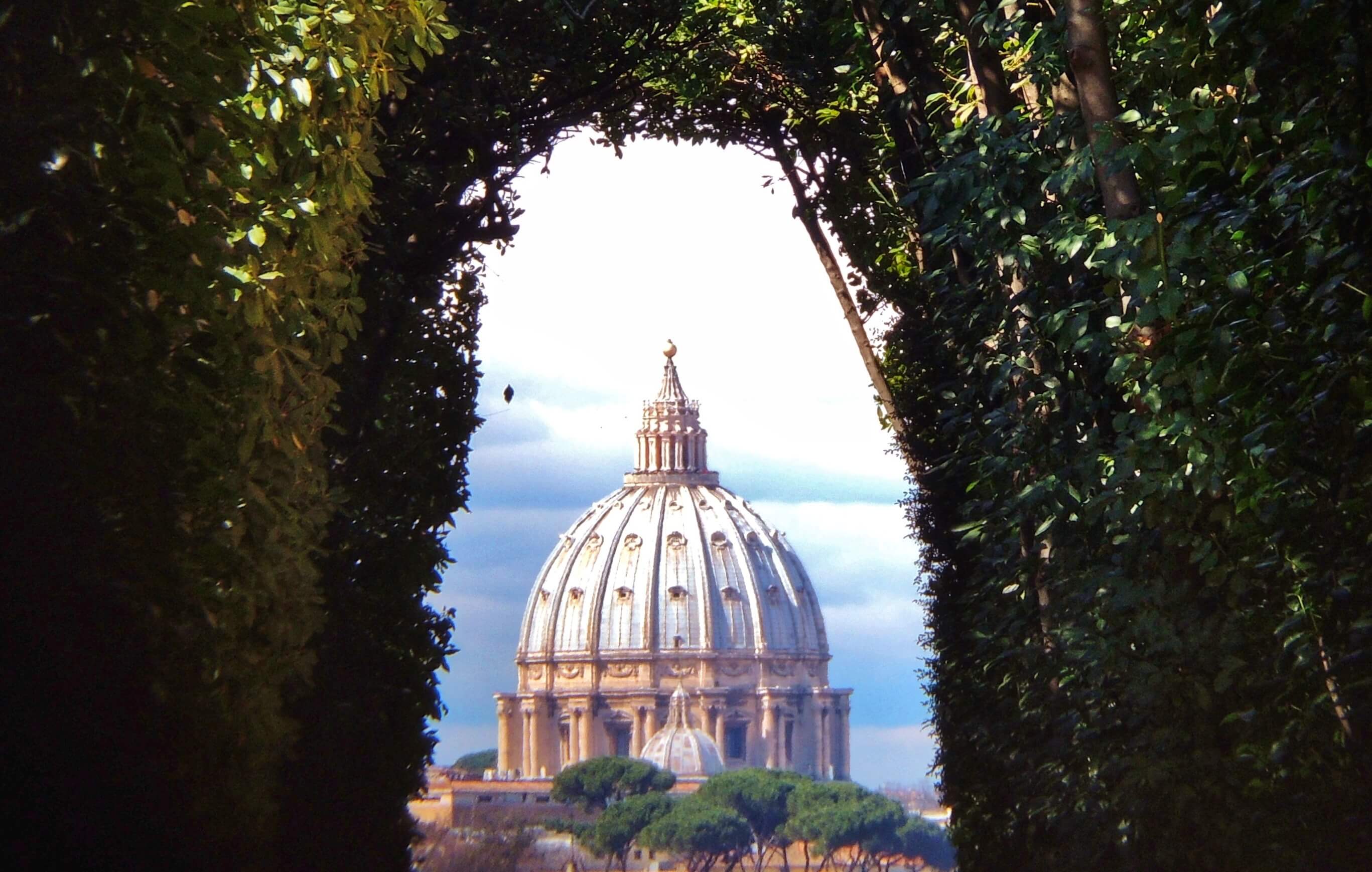
At first glance, it’s nothing but a closed green door. But press your eye to the keyhole of the Priory of the Knights of Malta, and a marvel appears: a perfect view of St. Peter’s dome, symmetrically framed by the hedges of the priory gardens. It’s a blink-and-you-miss-it wonder of perspective: one of the most surprising and enchanting sights in all of Rome.
This whimsical optical trick was the work of Giovanni Battista Piranesi, the great 18th century engraver and architect. When he redesigned this corner of the Aventine, he conceived the vista as a playful surprise for visitors: a miniature journey through Rome, from the Knights’ medieval priory, through Baroque gardens, to Michelangelo’s Renaissance dome rising over the Vatican. There’s always a queue of visitors waiting to take a peek through the tiny portal, but your patience will be rewarded. Find our more about the secrets of the keyhole of the Knights of Malta with our in-depth article here.
Priory of the Knights of Malta
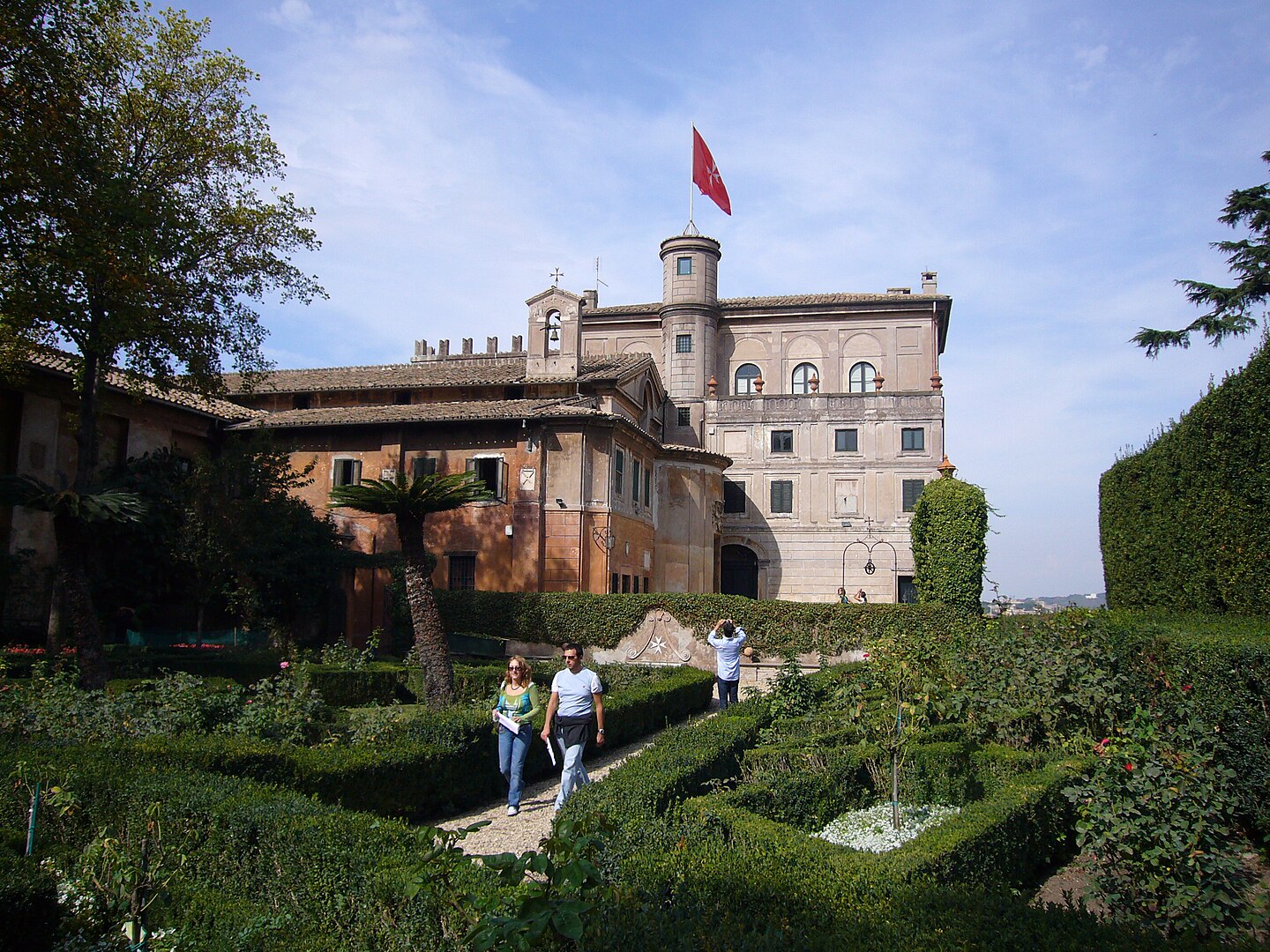 Photo by Lalupa, CC BY-SA 3.0, via wikimedia
Photo by Lalupa, CC BY-SA 3.0, via wikimedia
Behind the famous keyhole lies the walled stronghold of the Knights of Malta, one of the oldest chivalric orders in the world. Founded during the Crusades to protect pilgrims and tend the sick, the order still exists today as a sovereign entity with its own flag, passports, and diplomatic status. Their Roman headquarters has stood on the Aventine since the 12th century, hidden from view behind imposing gates.
Within lies the exquisite church of Santa Maria del Priorato, remodeled in the 1760s by Piranesi. This little gem is a manifesto of Neoclassicism, where every column, sarcophagus, and emblem was carefully chosen for symbolic effect. Piranesi himself is buried here, fittingly among the monuments he designed. The priory is rarely open to visitors, but its aura of secrecy only adds to the mystique.
The Orange Garden (Giardino degli Aranci)
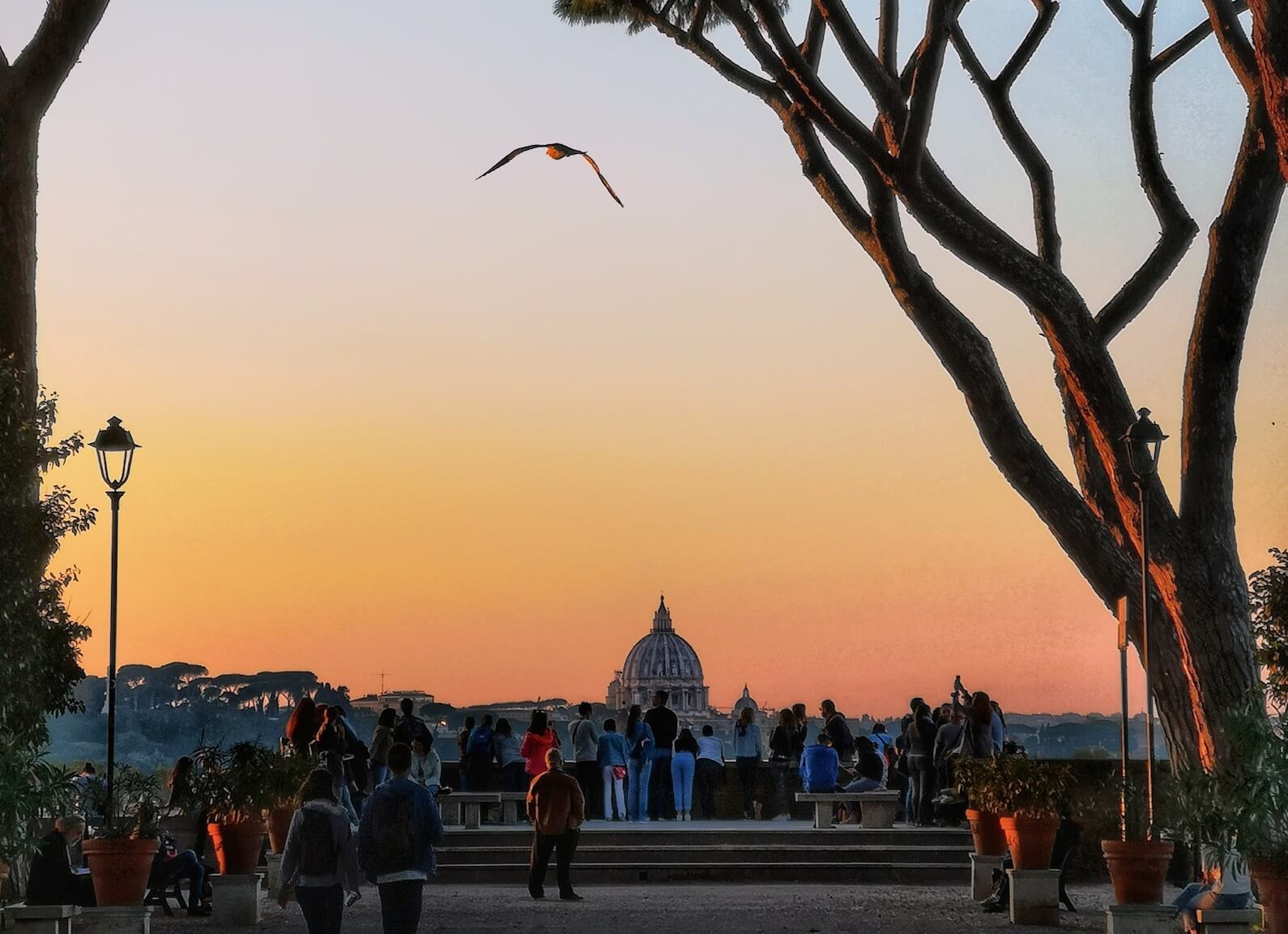
There can be few more romantic places on earth to watch the sunset than Rome’s Giardino degli Aranci. Perched on the crest of the Aventine, this leafy park is filled with fragrant orange trees, umbrella pines, and gravel walkways that lead to one of the Eternal City’s most iconic viewpoints. From the terrace, St. Peter’s dome looms impossibly large across the rooftops of Trastevere, while the Tiber glitters far below.
The garden takes its name from the orange trees that line its walkways. In spring, the air is filled with the scent of citrus blossoms, while autumn brings the spectacle of ripening fruit glowing against the greenery. Yet the real magic comes at dusk, when the sky flares the same fiery shade as the oranges and the whole city seems to gather here to watch Rome bathe in golden light.
See the beautiful Garden of Oranges on our Hidden Rome tour!
Santa Sabina
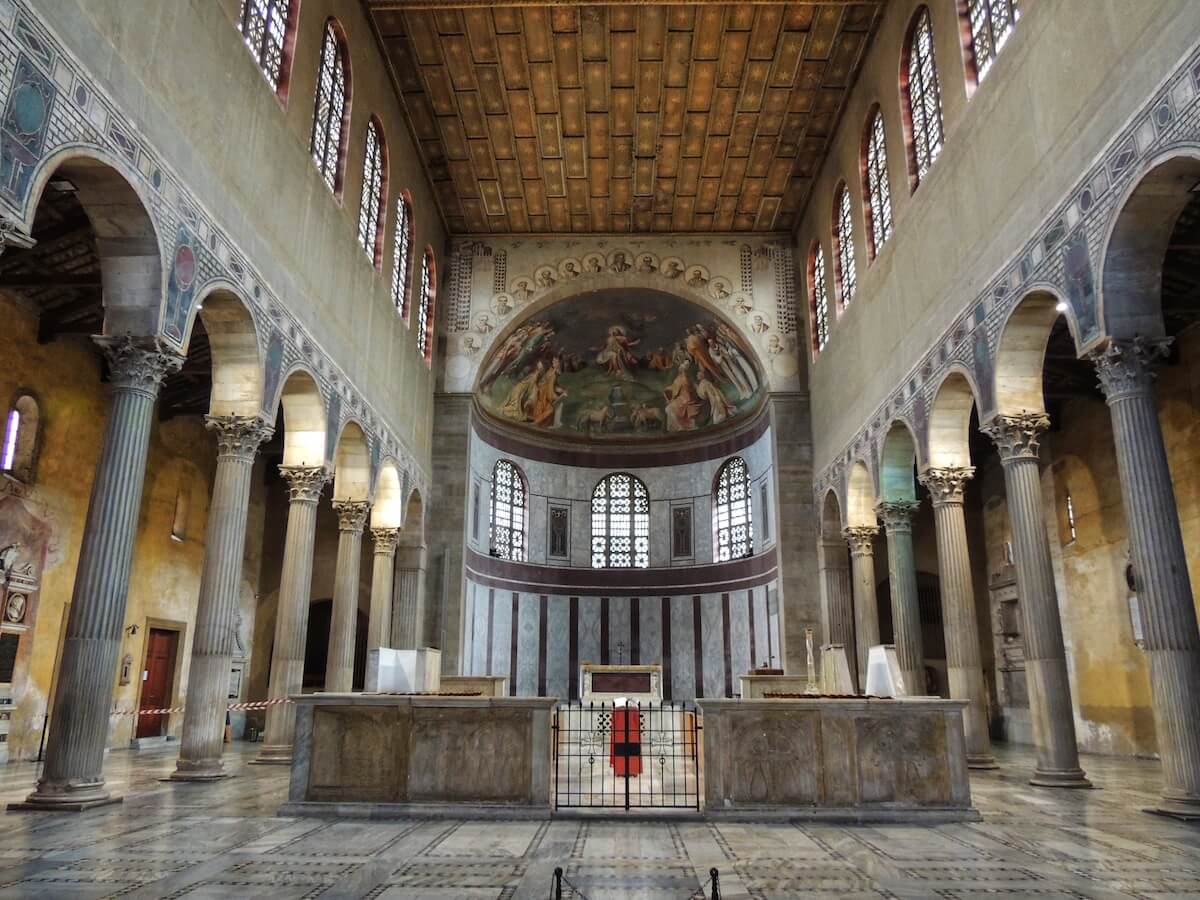
The basilica of Santa Sabina offers a rare chance to step back into the world of early Christianity. Built in the 5th century under Pope Celestine I, it is arguably the best-preserved example of a Paleochristian church in Rome, its simple lines and luminous interior giving an impression of the faith in its earliest form. Light pours through high mullioned windows onto rows of marble columns that divide the airy nave, while the floor is studded with centuries-old gravestones worn smooth by pilgrims’ feet.
Look closer for details: the carved wooden doors, dating to around 430, feature one of the earliest known images of the Crucifixion. A rough stone near the entrance meanwhile is said to have been hurled at Saint Dominic by the Devil himself. Spare, serene, and atmospheric, Santa Sabina allows us to imagine what Christianity must have felt like when it first took root in Rome.
Discover more of Rome's oldest churches with our guide here: Six of the Most Ancient Churches in Rome.
Dominic’s Cloister Garden
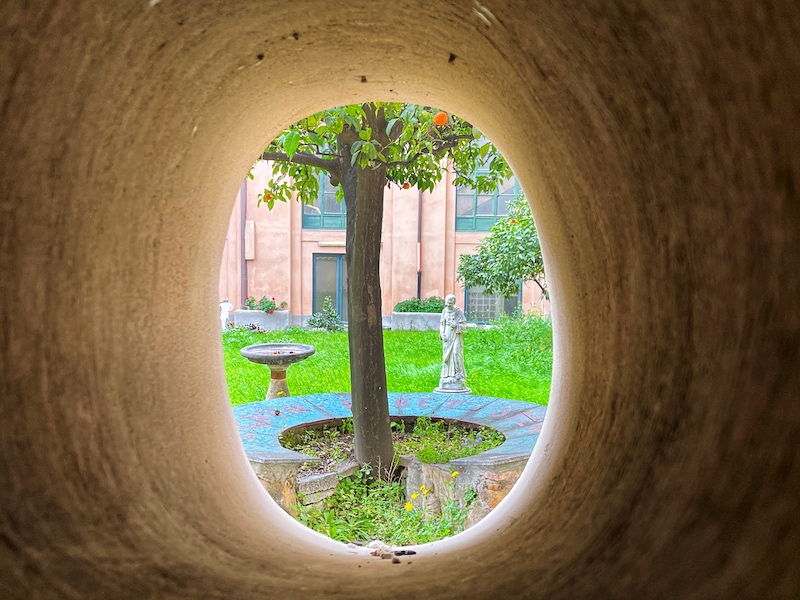
Tucked away in the grounds of Santa Sabina is a fascinating historical curiosity. A small window in the outer wall reveals a hidden cloister where, according to tradition, Saint Dominic planted an orange tree brought from his native Spain in the early 13th century. Though the original trunk has long since vanished, the tree seems unwilling to die - sprouting again and again from its ancient roots. Some even claim it was the very first orange tree in Italy.
The survival of the tree is commemorated by a Latin verse from the Book of Job inscribed in the cloister: Lignum habet spem - “There is hope for a tree, if it be cut down, that it will sprout again.” Over the centuries, Dominic’s oranges became prized relics. In the 14th century, St. Catherine of Siena candied the fruit for Pope Urban VI, and generations of pilgrims treasured their bittersweet taste.
The Rose Garden (Roseto Comunale)
On the slope of the Aventine overlooking the Circus Maximus blooms one of Rome’s most enchanting seasonal gardens. The Roseto Comunale, or municipal rose garden, is home to more than a thousand varieties of roses, spread across terraces that were once part of the city’s Jewish cemetery. The flowers are in full bloom in May and June, but if you’re traveling to Rome later in the year fear not: the rose garden reopens in the autumn when a second flowering fills its beds with fresh color. If your trip coincides with the Roseto’s opening periods, it’s a magical place to wander - a living, fragrant reminder of Rome’s eternal love of beauty.
Clivio di Rocca Savella
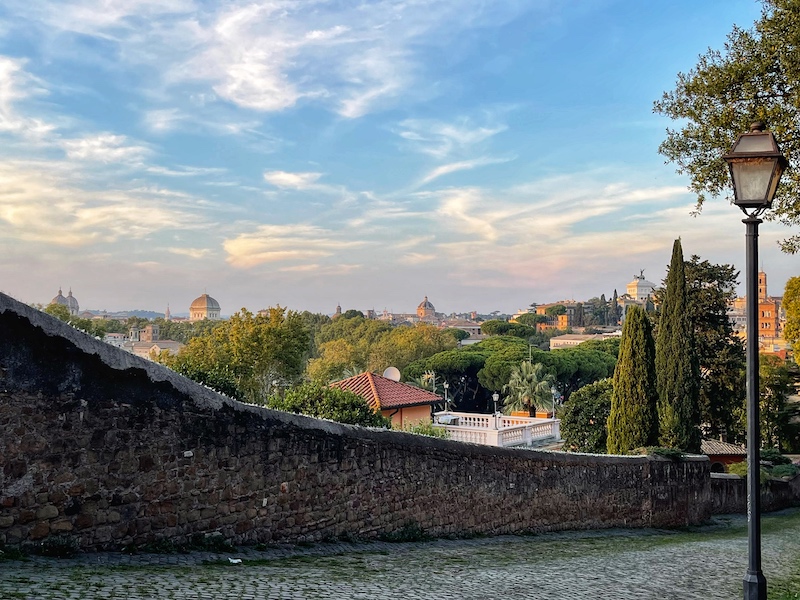
Few visitors find their way to the Clivio di Rocca Savella, a winding cobbled lane that climbs up the Aventine’s flank. In medieval times, this was one of the main access routes to the hill, and it gained new prominence in 1285 when Pope Honorius IV of the Savelli family abandoned the Lateran Palace and moved the papal court into his family fortress above. For a brief spell, this secluded street became one of the most important approaches in all of Rome.
Today the Clivio has returned to silence, overgrown with ivy and shaded by towering walls. As you ascend, glimpses open out over the Circus Maximus and Palatine Hill far below. The climb feels timeless, as though you are tracing the footsteps of popes, cardinals, and courtiers long vanished. It remains one of the Aventine’s most atmospheric and least-known secrets.
Fontana della Mascherone
Propped up against the outer wall of the Orange Garden, the Fontana della Mascherone is a curious blend of antiquity and invention. Despite its ancient look, the fountain was actually created in 1936 by the architect Antonio Muñoz, who pieced it together from fragments of Rome’s past. Its centerpiece is a monumental stone mask designed by Giacomo della Porta in 1593. Originally, this grotesque face adorned a drinking trough in the Campo Vaccino, the cattle market that sprawled over the ruins of the Roman Forum.
When relocated to Piazza Pietro d’Illiria, the fountain was transformed into a romantic ornament for the Aventine. The gushing water and stern visage of the mask are especially striking in autumn, when the surrounding walls are draped in fiery leaves. A stop at the Mascherone is the perfect prelude to the views awaiting just beyond.
Santa Prisca
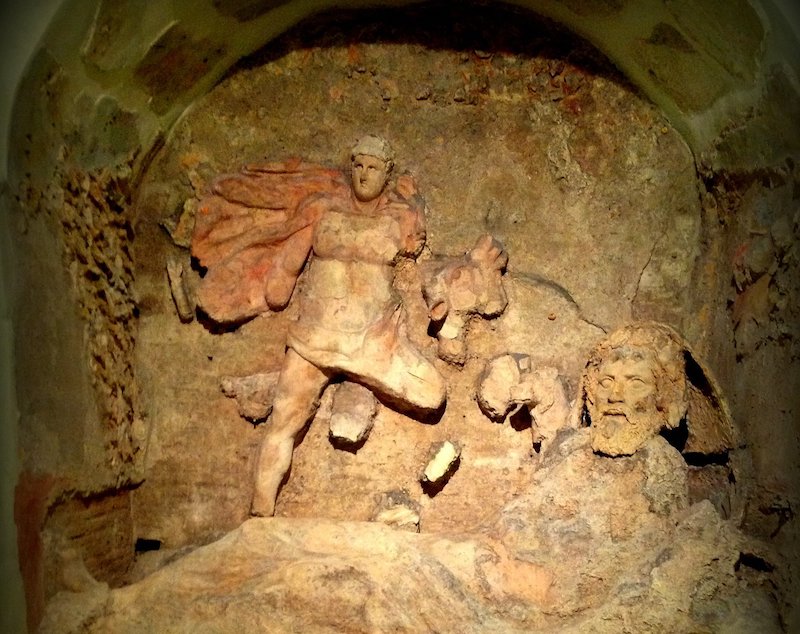
On the surface, Santa Prisca is a modest early Christian church, but beneath its floor lies one of the most remarkable pagan sanctuaries in Rome. In 1934, Augustinian friars stumbled upon a Mithraeum here - a 3rd-century temple dedicated to the god Mithras. Step underground and you’ll find yourself in a long, dim hall once used for ritual banquets, its walls still painted with vibrant frescoes of initiates and gods. At the center is the dramatic scene of Mithras slaying the sacred bull, the so-called tauroctony, symbolizing renewal and life.
Above, the Christian church represents triumph over paganism, yet ironically, it also preserved the Mithraeum almost intact. To visit, you’ll need to arrange ahead, but it’s worth the effort. Few places in Rome make the layering of religions and centuries so vivid, from the mysteries of an Eastern cult to the steady rise of Christianity on the Aventine.
Sant’Alessio
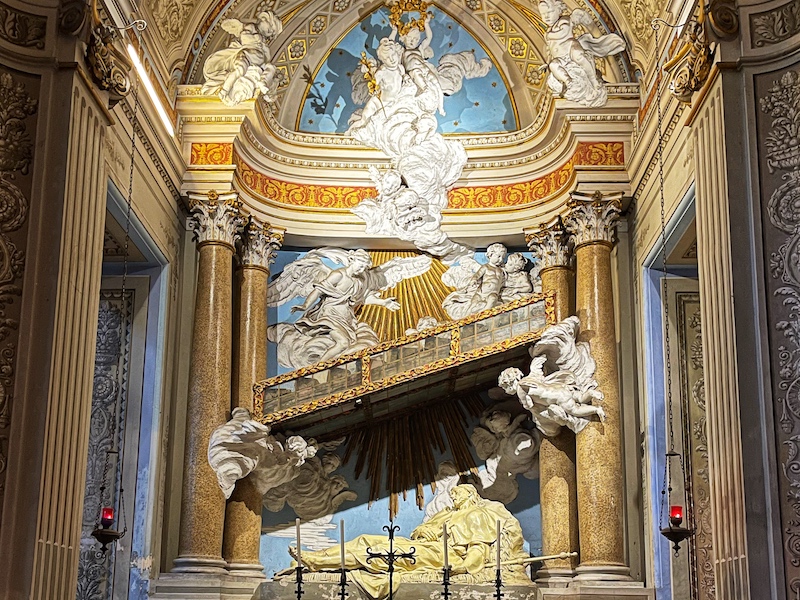
The quiet church of Sant’Alessio holds one of Rome’s strangest relics: a staircase. According to legend, Saint Alexius, son of a wealthy Roman family, renounced his inheritance to live as a beggar. Unrecognized, he returned years later to his father’s house, where he dwelt humbly beneath the steps until his death. The worn wooden staircase preserved in the church is said to be the very one beneath which he lived.
The basilica itself has roots in the 4th century but took on its current form in the Middle Ages, with a handsome campanile and shaded cloister. Inside, a lavish baroque chapel shelters Alexius’ relics. The church today is remarkably peaceful, a favorite for local weddings thanks to its leafy setting and romantic legends.
We hope you enjoyed our guide to the Aventine Hill! For 25 years, Through Eternity have been organizing itineraries showcasing the best of Rome led by our resident expert guides. If you're planning a visit to the Eternal City this year, be sure to get in touch to help plan your perfect trip!
MORE GREAT CONTENT FROM THE BLOG:
- Hidden Rome: The Amazing Keyhole of the Knights of Malta
- Everything you Need to Know About Visiting Rome
- How to visit the Colosseum in 2025: Tickets, Hours, and More
- 7 Things you Need to Know About the Trevi Fountain
- Visiting the Vatican Museums and St. Peter's Basilica: The Complete Guide
- 9 Things You Need to Know About the Pantheon in Rome
- 5 Reasons to Explore Italy with Through Eternity
- The Best Catacombs to Visit in Rome


